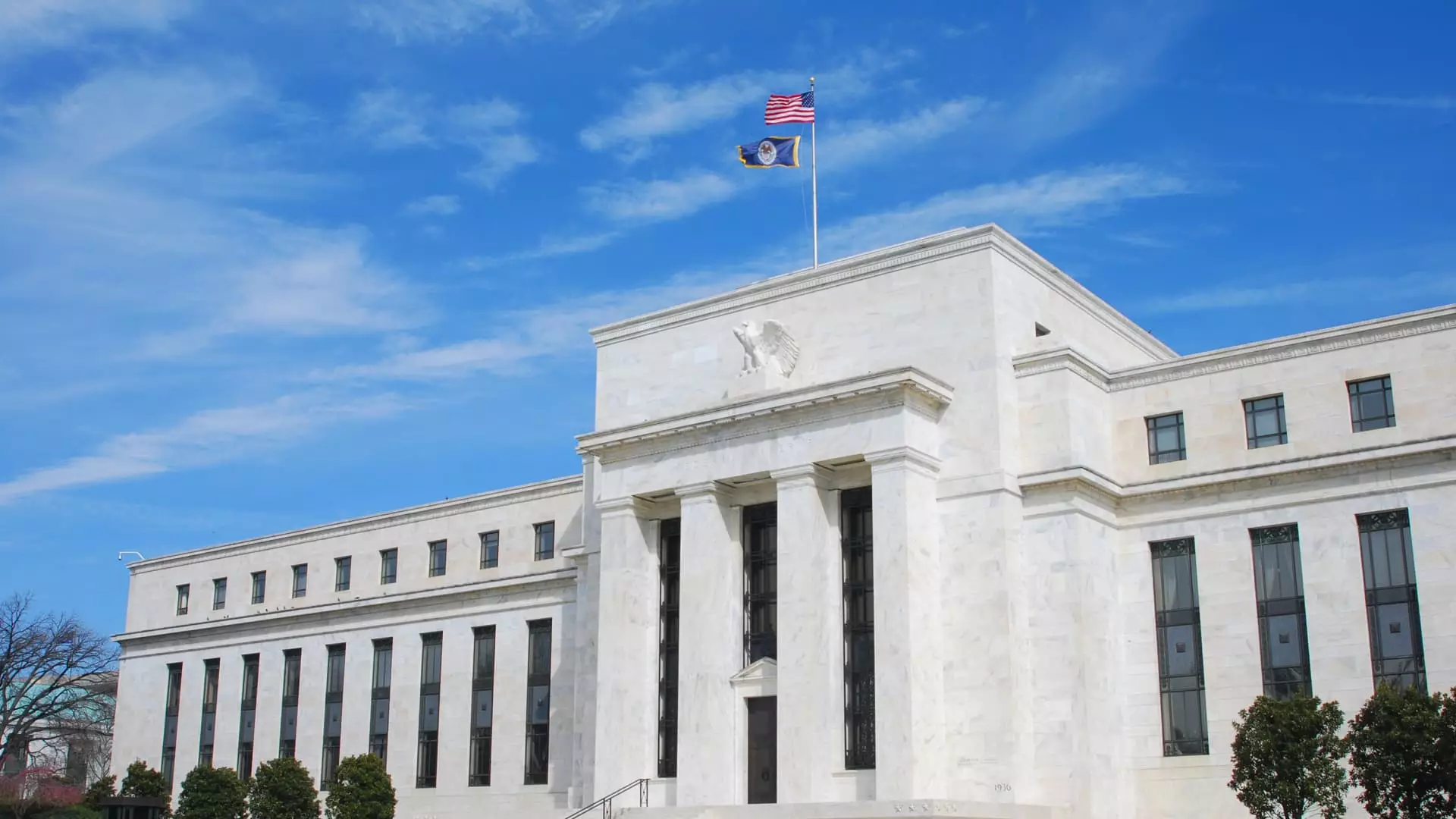In the intricate dance of economic maneuvering, the Federal Reserve’s recent decision to maintain steady interest rates raises significant questions about the health of the U.S. economy. While many observers might view the lack of movement in these rates as a stabilization strategy, I argue it reveals a troubling complacency amidst an increasingly volatile financial landscape. The reported decline in inflation, although a glimmer of hope, is overshadowed by a looming trade war that threatens to escalate prices across an ever-widening array of consumer goods.
The Fed’s current strategy reflects an unwillingness to adapt swiftly to emerging threats. With tariffs being implemented not only in the U.S. but also affecting trade partners worldwide, the potential for inflationary pressures is palpable. It’s almost as if the Fed is caught in a quagmire of its own making—risk-averse, but potentially risking more by failing to respond dynamically to global economic shifts. Andrzej Skiba of RBC Global Asset Management encapsulates this sentiment perfectly; he projects that the forthcoming tariffs will inevitably squeeze consumers, stipulating doubts about the Fed’s ability to cut rates in this environment.
Impact on Consumers: Beyond a Stagnant Rate
While it might be easy to dismiss the Bankrate.com’s Greg McBride’s assertion that consumers are “stretched and stressed,” the reality is that inaction at the federal level only compounds these issues. Consumers have an insatiable need for accessible credit; it’s integral for everything from owning a home to financing a car. Yet, despite the Fed’s inaction, there is faint glimmer of relief on the horizon—with loan rates for mortgages, auto loans, and credit cards trending slightly lower. However, we cannot ignore that these rates still remain worryingly high when viewed against historical data.
The reality is stark: if you’re a consumer in today’s economy, every month your credit card statement serves as a reminder that debt is mounting. Despite recent drops, credit card APRs are hovering around a staggering 20.09%. With revolving debt soaring by 8.2% year-on-year, this becomes a heavy albatross for families trying to keep their heads above water. The stagnation of rates is a serious concern; the longer households are restricted by high debt costs, the more vulnerable they find themselves to economic downturns—or destabilizing trade policies.
The Higher Cost of Living: Stressed but Evolving Consumer Behavior
Compounding the issue of stagnant rates is the actual crushing weight of consumer goods prices. Many Americans are already struggling with essential costs, and the possibility of further tariffs exacerbates this problem. Rising prices are not just numbers on a balance sheet—they manifest as real pain points for low- and middle-income families who depend on affordability. When you consider that auto loan rates have also dipped slightly, they remain in a precarious situation: consumers want new cars, but with prices consistently climbing, those few percentage points lower hardly make a substantial difference in the long run.
Take, for instance, the recent uptick in fixed federal student loan interest rates—an alarming spike from 5.50% to 6.53%. For many, these education debts will persist long after they’ve stepped into the workplace, contributing to a cycle of financial strain. The very structure of student loans protects them somewhat from Fed’s interest rate decisions; however, we cannot ignore the overarching pressure that high borrowing rates impart on future generations. Young adults are rightfully anxious about their economic prospects—no one wants to start their life in the red.
Environment for Savings: Reason for Optimism or Placebo Effect?
Amid all the fiscal chaos, there exists a faint silver lining: online high-yield savings accounts currently boast averages upwards of 4.4%. While Bankrate’s McBride emphasizes that savings rates haven’t fluctuated with the Fed’s indecision, I argue that this stability should not breed complacency. The return on savings is a tepid consolation for those grappling with an unstable economy. It feels almost like a feeble attempt to paint a rosy picture where reality is far more troubling.
Moreover, we must question whether this newfound focus on savings is more of a shift in consumer behavior than an actual improvement in financial conditions. As borrowing becomes increasingly unattractive, it pushes many towards a saving-first ethos, but at what cost? The question remains: despite interest rate stability and higher yields, will Americans be able to sustain meaningful financial growth in an era defined by uncertainty and rising costs? The Fed’s inertia raises crucial concerns about whether it can adequately support Americans on the precipice of economic malaise while still pursuing a path for robust recovery.

